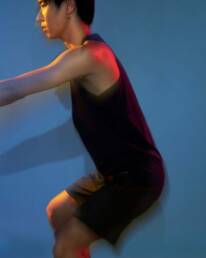Movement therapy, a holistic approach to well-being, recognizes the intricate connection between the body and the mind. Rooted in the belief that movement is a gateway to self-discovery and healing, this therapeutic practice employs various physical activities, dance, and mindful movements to promote emotional expression, enhance physical function, and foster a sense of wholeness. In this exploration, we delve into the techniques, benefits, and considerations that define the art of movement therapy.
The Core Techniques:
- Embodied Movement Exploration:
- Movement therapy encourages individuals to explore and express themselves through a wide range of movements, fostering a deeper connection between mind and body.
- Techniques may include spontaneous, free-form movements to uncover authentic expressions and release emotional tension.
- Mindful Movement Practices:
- Incorporating mindfulness principles, movement therapy often includes practices such as conscious breathing, body scanning, and meditation to enhance present-moment awareness.
- These practices promote a deeper connection to the body and its sensations.
- Dance and Creative Movement:
- Dance and creative movement form a central component of movement therapy, allowing individuals to express emotions, release stress, and tap into their innate creativity.
- Structured dance sequences or improvised movements may be employed based on the individual’s preferences.
- Yoga and Stretching:
- Integrating yoga poses and stretching exercises enhances flexibility, promotes relaxation, and supports the release of physical tension.
- Yoga-based movement therapy may focus on gentle flows or restorative poses to align body and mind.
- Body-Mind Integration:
- Movement therapy emphasizes the integration of body and mind, recognizing the bidirectional relationship between physical movement and emotional well-being.
- Therapists guide individuals in exploring the connections between physical sensations and emotional states.
Benefits of Movement Therapy:
- Emotional Expression and Release:
- Movement therapy provides a non-verbal outlet for emotional expression, allowing individuals to release and process emotions through movement.
- Stress Reduction:
- Engaging in mindful movements and expressive dance helps reduce stress by promoting relaxation and calming the nervous system.
- Improved Body Awareness:
- Movement therapy enhances body awareness, encouraging individuals to attune to physical sensations, postures, and the overall felt sense of the body.
- Enhanced Self-Esteem:
- Through movement exploration and self-expression, individuals may experience an enhanced sense of self-esteem and self-acceptance.
- Increased Mobility and Physical Well-Being:
- Incorporating stretches and physical activities promotes increased mobility, flexibility, and overall physical well-being.
Considerations:
- Individualized Approach:
- Movement therapy is tailored to the individual’s needs, preferences, and comfort level.
- Therapists adapt techniques to suit the unique circumstances and goals of each person.
- Trauma-Informed Practices:
- Movement therapists often use trauma-informed practices, creating a safe and supportive environment for individuals who may have experienced trauma.
- Integration into Daily Life:
- The benefits of movement therapy can be maximized when individuals integrate mindful movement practices into their daily lives as a form of self-care.
Movement therapy stands as a dynamic and inclusive approach to holistic well-being, inviting individuals to embark on a journey of self-discovery, expression, and healing through the language of the body. In the dance of movement, individuals find not only a means of physical expression but also a pathway to emotional release, self-empowerment, and a profound sense of wholeness. As the body becomes a canvas for self-discovery, movement therapy exemplifies the transformative power of intentional and mindful movement in the pursuit of holistic wellness.


